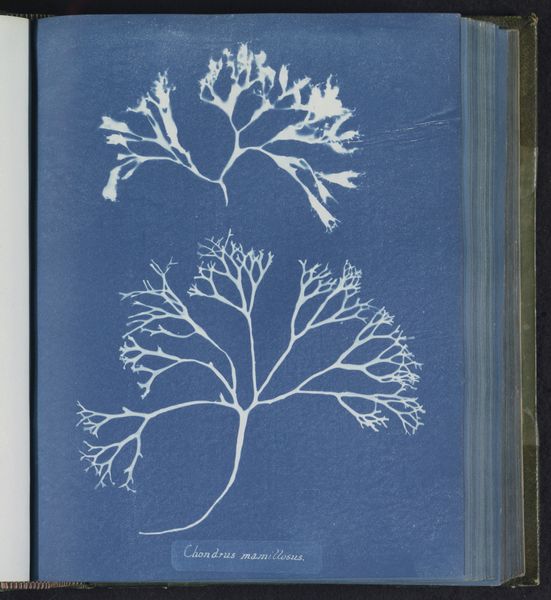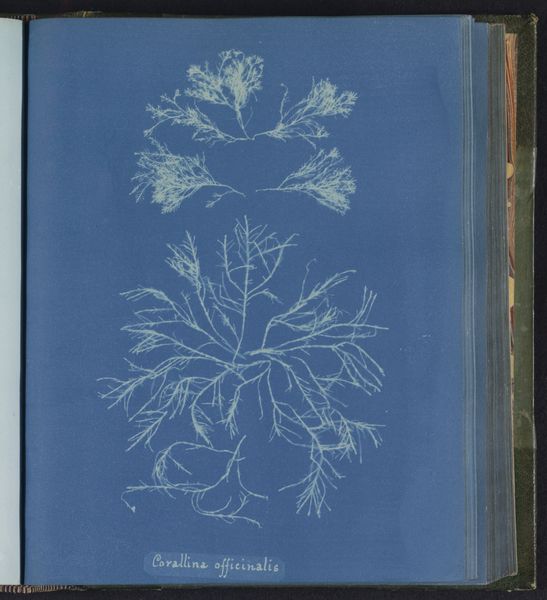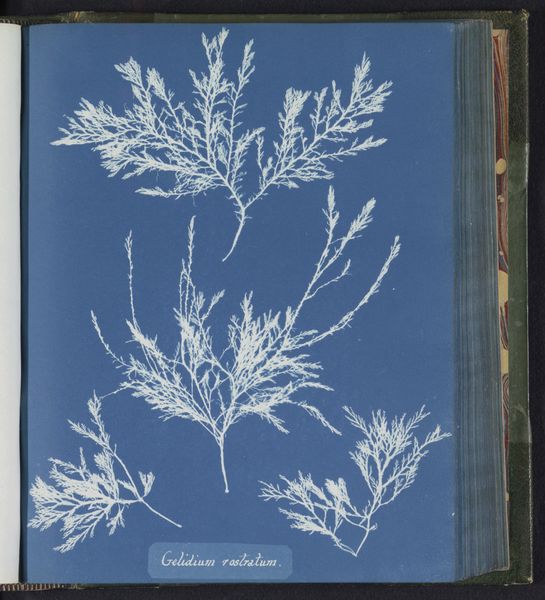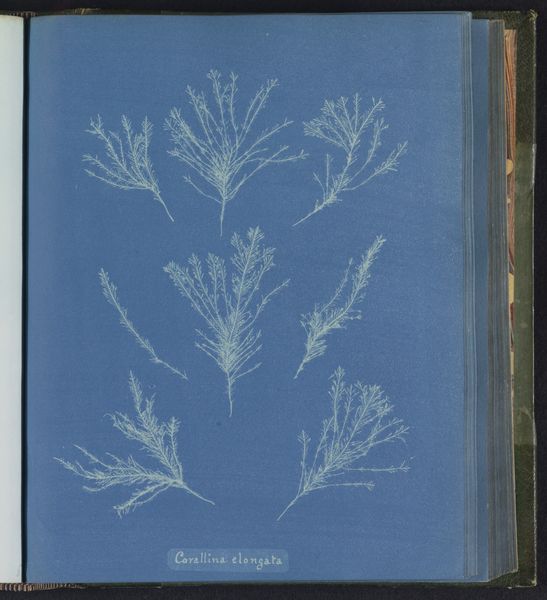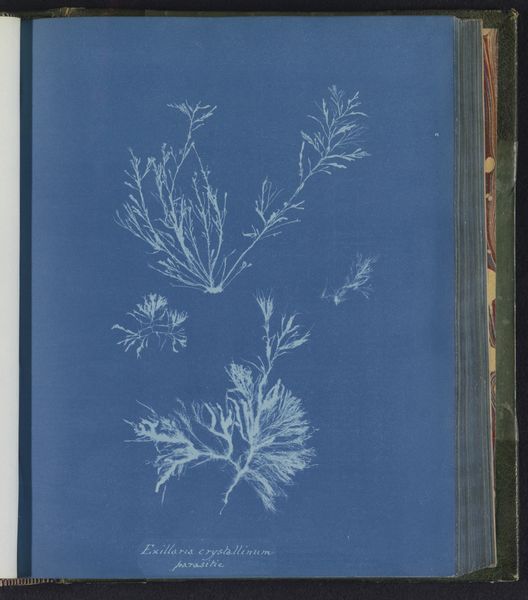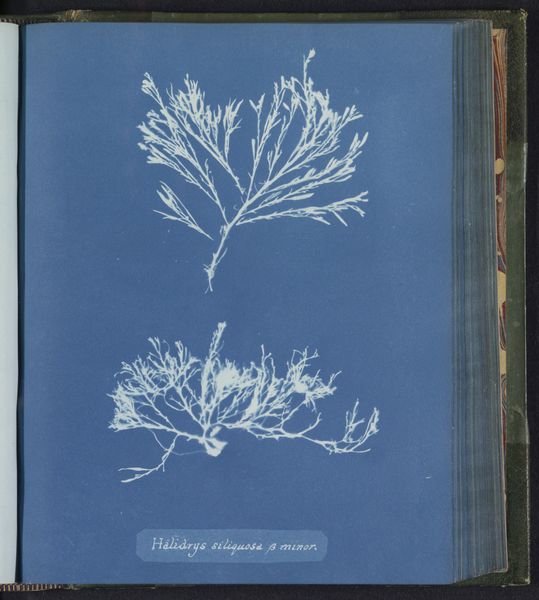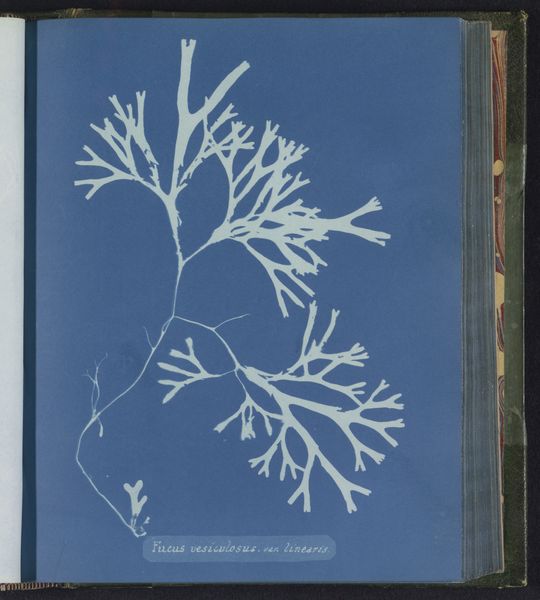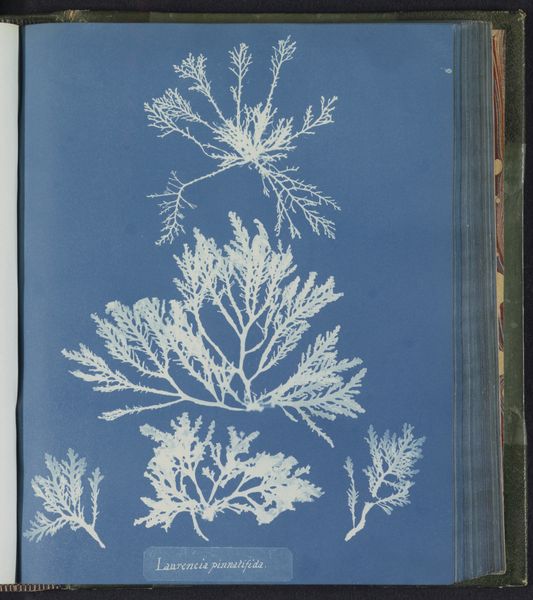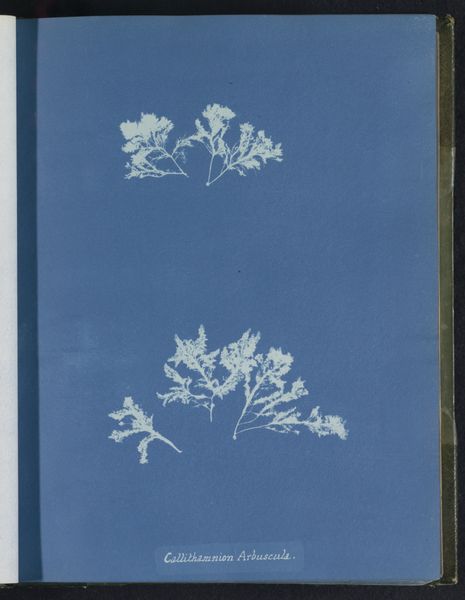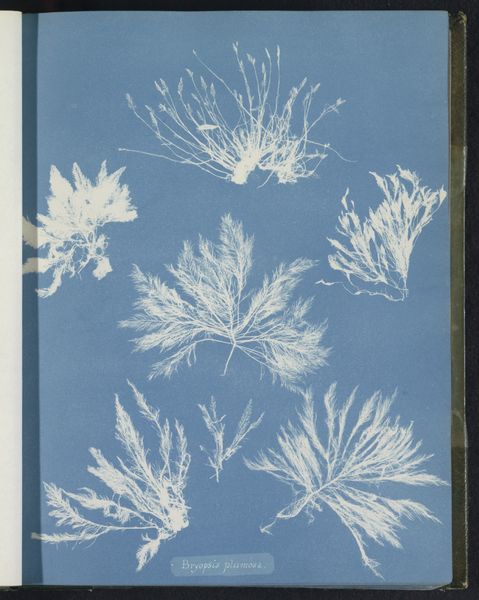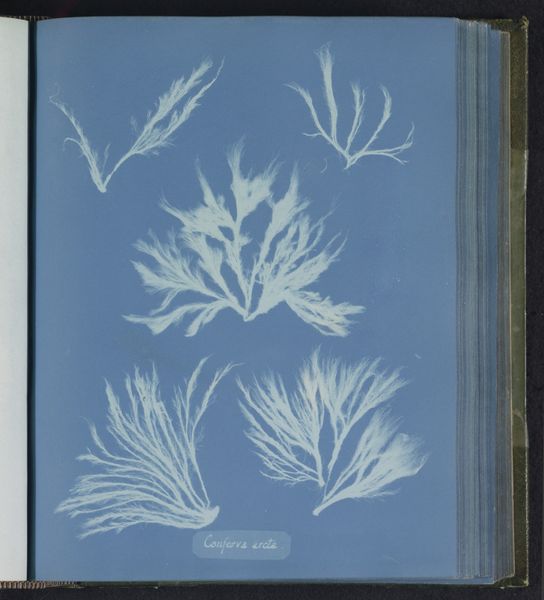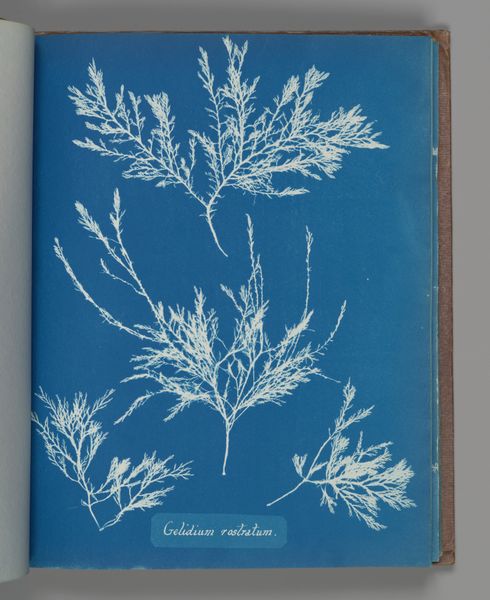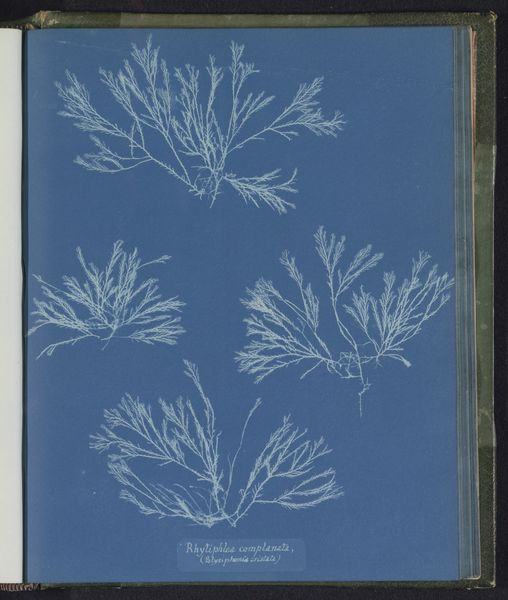
print, cyanotype, photography
# print
#
cyanotype
#
photography
#
realism
Dimensions: height 250 mm, width 200 mm
Copyright: Rijks Museum: Open Domain
Editor: Here we have Anna Atkins' "Chondrus membranifolius," created sometime between 1843 and 1853. It's a cyanotype, so a very early form of photography. There's something ghostly and delicate about it, the white algae against that intense blue. What strikes you about this piece? Curator: The immediate thing is the striking contrast, wouldn’t you agree? Atkins uses it so masterfully! But I’m equally drawn to how this cyanotype embodies the intersection of art and science. These weren't merely pretty pictures. They represent a system of cataloging, a visual language for understanding the natural world. The intense Prussian blue becomes a symbolic backdrop - perhaps representative of enlightenment, truth or just the ocean, yes? What feelings does the color elicit in you? Editor: That’s fascinating! It feels clinical, but beautiful, like an objective record elevated to art. It’s strange. The blue is so calming, it reminds me of summer, of swimming… Curator: Precisely! Don't you find how this resonates, as you look closer, on an almost primeval urge for connection? We inherently seek structure and patterns, which is obvious with her cataloging this seaweed, yes? The way the algae’s delicate fronds reach out are both beautiful and slightly unsettling in their detail, making it an invitation to explore this liminal space. Is there something like Jung's "collective unconscious," being recalled with the ocean perhaps? What might viewers have felt at the time of production when experiencing the artwork? Editor: I guess at the time it would have been groundbreaking just to see photography used this way. To document science… or nature... It gives new meaning to art and history working together, maybe? Curator: Exactly, our memory relies so much on visual cues! By employing this technique, she intertwined them for both science and history. Editor: I never thought about the psychology of color and imagery of science so deeply before. That gives me a fresh perspective! Curator: Indeed, by focusing and understanding that period between disciplines of science and the fine arts it changes your reading so that you see the artwork more broadly.
Comments
No comments
Be the first to comment and join the conversation on the ultimate creative platform.
